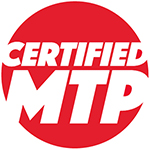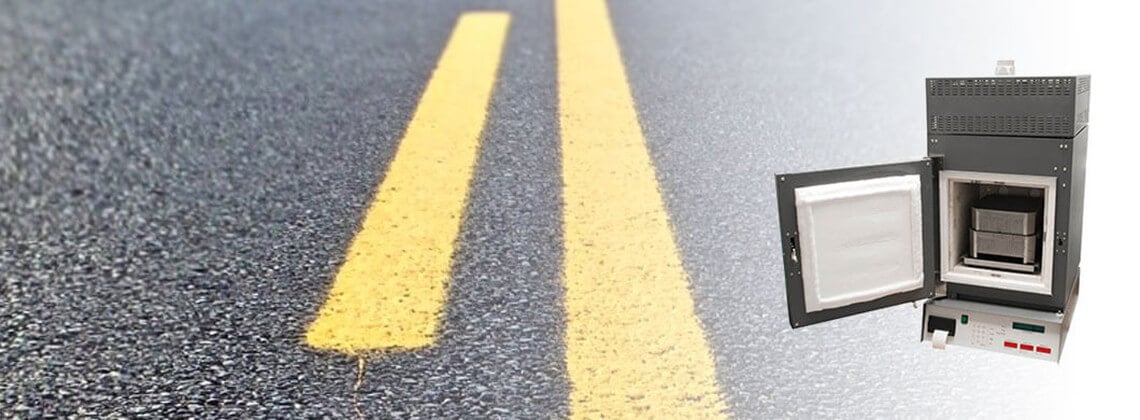Science goes into every aspect of building a road to ensure it will last. The materials are tested at many points before the road is laid to make sure the materials will hold up to weathering and levels of traffic. There are many different materials used when building a road, many will depend on the traffic, but lab supply is critical to proper testing.
Road Material Selection: Factors & Engineering
Asphalt and aggregate (or composite) concrete are the strongest and therefore used for building roads that have high levels of traffic. Areas with low traffic and low speeds allow for materials like bituminous surface treatment or chip seal. For driveways and rural roads, gravel or road base (an aggregate of ground-up rock materials) may be used to keep the road from washing out and grooving too badly. These roads will need to be maintained to keep them functional, but the materials laid will help keep the road in better shape than if left-packed dirt.
Beyond the testing in the lab, the process of laying the roads is very specific and requires engineering to make sure there is proper drainage and degrees of incline. For high-traffic roads, there is more engineering that goes into building the road, as they need to make sure curves will be safe for the speeds. The roads also need to be prepped for asphalt or concrete so they will be smooth for the traffic and speeds, and so they will last.
Keep Reading: Lab Supplies: Your Ultimate Guide to Selecting Quality Equipment.
Test your materials and make sure they will stand the test of time, speed, weight and traffic volume for the road surface and location. The testing process needs the right lab equipment and supplies. Certified Material Testing Products sells equipment to supply your lab with the right materials testing equipment. Keep your lab stocked with the materials needed to do testing on road materials with us, your one-stop shop!
Creating a comprehensive 1500-word overview of laboratory supplies requires delving deeper into the details and applications of each category of supplies. Let’s expand on the earlier overview:
Introduction
Lab supply is fundamental to scientific research, medical diagnostics, and educational lab supply. These supplies range from basic glassware to advanced analytical instruments, each serving a specific purpose in the laboratory environment. Understanding these supplies is essential for anyone involved in laboratory work, as they directly impact the accuracy, efficiency, and safety of scientific procedures.
1. General Lab Supply Equipment
Glassware Lab Supply
– Beakers and Flasks: Used for mixing, heating, and holding liquids. They come in various sizes and are often made from borosilicate glass to withstand thermal shock.
– Test Tubes: Small tubes used for holding, mixing, or heating small quantities of substances.
– Graduated Cylinders: For measuring liquid volumes accurately. They are marked with a scale to indicate the volume.
Plasticware Lab Supply
– Petri Dishes: Shallow dishes used for culturing cells and bacteria.
– Specimen Containers: Used for collecting and storing biological samples.
Lab Scales and Balances Lab Supply
– Analytical Balances: Provide high-precision measurements, essential for quantitative chemical analysis.
– Microbalances: Used for extremely precise measurements in microgram ranges.
Heating and Cooling Equipment
– Bunsen Burners: Provide a single open gas flame, used for heating, sterilization, and combustion.
– Incubators: Maintain controlled temperature, humidity, and other conditions for the growth of microbiological cultures or cell cultures.
Mixing and Agitation Equipment
– Magnetic Stirrers: Use a rotating magnetic field to stir liquids, often combined with a heating plate.
– Shakers: Mechanically agitate samples, commonly used in biology labs for culturing cells.
2. Analytical Instruments
Microscopes
– Compound Microscopes: For viewing small specimens not visible to the naked eye.
– Electron Microscopes: Use beams of electrons for much higher resolution than light microscopes.
Spectrophotometers
– UV-Vis Spectrophotometers: Measure light absorbance in ultraviolet and visible ranges of the electromagnetic spectrum.
– Fluorescence Spectrophotometers: Detect the intensity of fluorescent light emitted from samples.
Chromatography Systems
– Gas Chromatography (GC): Used for separating and analyzing compounds that can be vaporized without decomposition.
– Liquid Chromatography (LC): Separates ions or molecules dissolved in a solvent, used for larger, non-volatile molecules.
Electrophoresis Equipment
– Gel Electrophoresis: Used for separation and analysis of macromolecules (DNA, RNA, and proteins) based on their size and charge.
3. Safety Equipment
Personal Protective Equipment (PPE)
– Lab Coats and Aprons: Protect against chemical splashes.
– Gloves: Different materials like nitrile, latex, or neoprene offer varying degrees of protection.
– Goggles and Face Shields: Protect eyes and face from chemical splashes, debris, and infectious materials.
Fume Hoods
– Chemical Fume Hoods: Ventilate hazardous gases, fumes, and dust.
– Laminar Flow Hoods: Provide a sterile environment for sensitive biological procedures.
Biohazard and Waste Disposal
– Biohazard Containers: For disposing of materials contaminated with biohazardous waste.
– Chemical Waste Disposal: Proper disposal systems for hazardous chemical waste.
Fire Safety Equipment
– Fire Extinguishers: Various types for different classes of fires.
– The Fire Blankets: Used to extinguish small fires or wrap around a person in case of a fire.
4. Chemicals and Reagents
Solvents and Acids/Bases
– Organic Solvents: Such as ethanol, acetone, and chloroform.
– Inorganic Acids and Bases: Including hydrochloric acid, sulfuric acid, and sodium hydroxide.
Indicators and Dyes
– pH Indicators: Change color at specific pH values.
– Fluorescent Dyes: Used in microscopy and fluorescence spectroscopy.
Standards and Calibration Solutions
– Primary Standards: Highly pure substances used for creating solutions of known concentration.
– Buffer Solutions: Resist changes in pH, used in various chemical and biological experiments.
5. Consumables
Pipettes and Syringes
– Micropipettes: For very small volume liquid handling.
– Syringes: Used for injecting or withdrawing fluids.
Filtration Supplies
– Filter Papers: Used in qualitative and quantitative analysis.
– Membrane Filters: For filtration of biological and environmental samples.
Disposable Gloves
– Single-Use Gloves
– Essential for maintaining sterility and protecting hands from chemicals.
6. Specialized Equipment
PCR and Centrifuges
– PCR Machines (Thermal Cyclers): Amplify segments of DNA through polymerase chain reactions.
– Ultracentrifuges: Spin at very high speeds, used for separating fine particles in suspension.
Cryogenic and Ultrasonic Equipment
– Cryogenic Storage: For storing biological samples at extremely low temperatures.
– Ultrasonic Cleaners: Use high-frequency sound waves for cleaning delicate instruments.
7. Data Analysis and Record-Keeping
Software and Lab Notebooks
– Data Analysis Software: For statistical analysis, graphing, and modeling of laboratory data.
– Electronic Lab Notebooks: Offer a digital way to record and store data.
Documentation Equipment
– Printers and Scanners: For maintaining hard copies of important documents and labels.
8. Custom and Specialty Supplies
Custom Synthesis and Glassware
– The Custom Chemicals: Synthesized to meet specific research needs.
– Specialized Glassware: Tailored for unique experimental setups.
Controlled Environment Chambers
– Humidity and Light-Controlled Incubators: For specific environmental conditions.
9. Sustainability and Waste Management
Recycling and Energy Efficiency
– Recycling Facilities: For sustainable disposal of lab materials.
– Energy-Efficient Appliances: Reducing the environmental impact of laboratory operations.
10. Emerging Technologies and Innovations
Advanced Technologies
– 3D Printing: For creating custom lab equipment and models.
– Lab Automation: Enhances efficiency and accuracy in experiments.
Virtual and Augmented Reality
– VR and AR in Labs: For training, molecular modeling, and complex data visualization.
Conclusion
Laboratory supplies are integral to scientific advancement and precision. The continual evolution of these supplies, driven by technological innovation and a growing focus on sustainability, is expanding the capabilities of modern laboratories. Understanding these tools is crucial for anyone engaged in laboratory work, impacting not just the outcomes of experiments but also ensuring safety and efficiency in the lab environment.
Certified MTP has an elite selection of lab solutions, showcasing industry-leading brands including Flasks, Beakers, Pipettes, & Graduated Cylinders, Erlenmeyer Flasks, Measuring Pipettes, Stainless Steel Beakers, Glass Graduated Cylinders, and Plastic Graduated Cylinders, lab hot plates, centrifuges, desiccators, lab burners, bunsen burners, including the popular vacuum ovens and all the needed vacuum pumps for your lab research.

